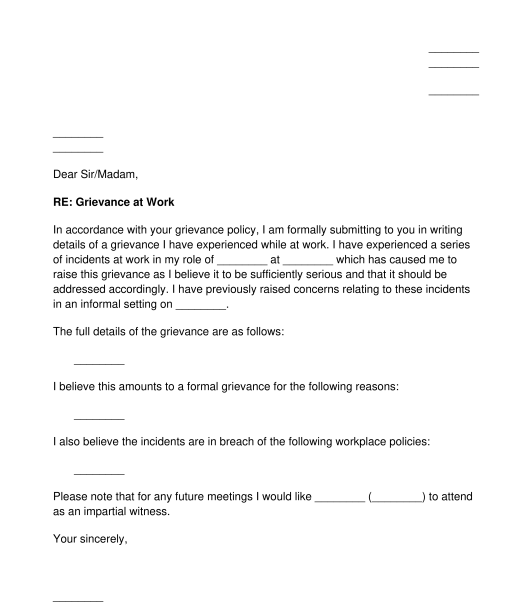 04/09/2025
04/09/2025

Answer a few questions and your document is created automatically.

Your document is ready! You will receive it in Word and PDF formats. You will be able to modify it.

A grievance letter is a document that an employee uses to make a formal written complaint to their employer about a specific matter affecting their employment.
Yes, It may be mandatory to have a grievance letter if it is required by the employer's grievance policy to make formal complaints using a grievance letter. Additionally, it is highly recommended to use a grievance letter when making a formal grievance for record purposes and if the matter is escalated (e.g. to court).
The grievance letter should be signed and dated by the employee raising a grievance.
It should then be provided to the appropriate individual within the employer's organisation who will be responsible for investigating the incidents, such as the HR Director.
The person raising the grievance may wish to keep a copy of the document in case the employer loses or claims never to have received the original.
A grievance letter must contain:
There is no formal law surrounding the grievance process, however the issues detailed in the grievance may contravene various acts in employment law, such as the Employment Rights Act 1996, the Employment Act 2008 and the Equality Act 2010.
Employers should be aware of government guidance, ACAS guidance on dealing with grievances at work and the ACAS code of practice on disciplinary and grievance procedures.
You fill out a form. The document is created before your eyes as you respond to the questions.
At the end, you receive it in Word and PDF formats. You can modify it and reuse it.
A guide to help you: How to Send a Letter
Grievance Letter - Sample, template - Word & PDF
Country: United Kingdom